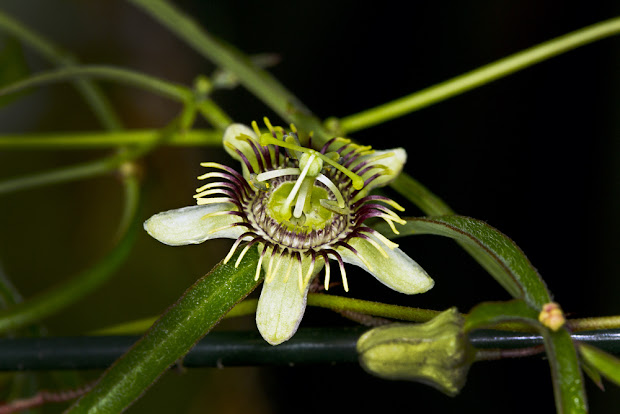Back the other month, I had an unfortunate incident where the lawn men working on my neighbor's yard hacked up part of my century plant in the front yard and then proceeded to remove a small trellis and mow down a passiflora tenuiloba plant I'd had growing beneath the agave. Needless to say, I was livid, because the tenuiloba, after two years, had finally put out flower buds. I've been trying to grow this uncommon Texas native (it's not rare--it grows wild in parts of South and West Texas, but it isn't in cultivation and very difficult to find through nurseries) for years now, and bad things keep happening to my plants. I put up a new trellis to guard it, put down some organic fertilizer and made an effort to keep it watered during our ongoing drought. I was rewarded with it rebounding quite well, and wonder of wonders, flowering freely for me! The photos below are from the second bloom from the plant, taken with my Canon 7D and EF 100mm 2.8 macro lens utilizing a ring light for illumination.
The flowers are tiny, maybe half an inch/centimeter across, and easy to miss. The pretty colors blend together when just observed with the naked eye, and look like a dark brown. It's not until the flower is magnified that the maroon and yellow in the filaments become obvious. The bad news is that tenuiloba is not self-fertile. I have another clone of the species I bought earlier this summer, but it's showing no signs of flowering. I'm at a loss for collecting pollen from these flowers, as I can barely see the anthers without a magnifying glass. Harvesting and storing the pollen would be a big challenge, especially with no idea if or when the other plant will flower...
Now Playing: Dave Davies Rock Bottom: Live at the Bottom Line
Chicken Ranch Central







No comments:
Post a Comment